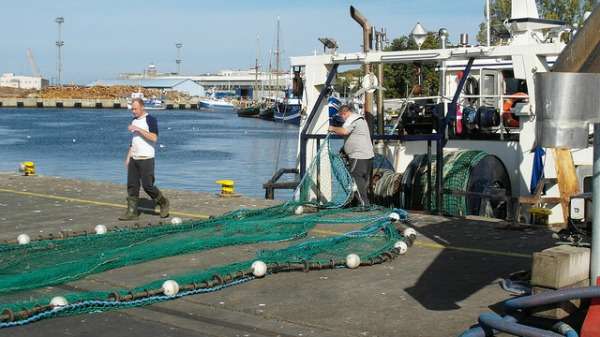Trawling for fish and scooping up public opinion

The idea of bycatch, or marine creatures being unintentionally captured by commercial fishing gears, has long proved to be a point of contention for the Australian public.
But when considering these issues attached to commercial fishing, people need to bear in mind that the solution is not as simple as closing a fishery—nothing comes free.
In a recent paper to the Wakefield Fisheries Symposium in Alaska titled "Fisheries Bycatch: Global Issues and Creative Solutions" we encourage people to take a wider view on fishery interactions with marine mammals.
We propose that separating biological risks from social acceptability is a first step in encouraging a broader perspective on fishery-marine mammal interactions.
Bycatch species occur in almost all fisheries, including recreational fisheries, just think 'blowies'.
What is often forgotten is that fishers do not want to interact with bycatch species and avoid bycatch as much as possible.
This is not simply due to rules and legislation; there are often economic incentives (e.g. bycatch species taking baits, or filling meshes or pots that could be taken by target species; reduced trawl efficiency).
There is also potential for increased costs through removing bycatch and repairing or replacing damaged gears and occupational health and safety risks to crew (e.g. spines, poisons, teeth etc.).
Fortunately, Australia and other places have invested heavily in research, development, management and fishery innovations that have significantly reduced bycatch rates.
West Australian examples include BRDs (bycatch reduction devices, grids fitted inside trawl nets to expel large species, like turtles) and SLEDs (sealion exclusion devices—a vertical rod fitted in commercial lobster pots to allow lobsters in but keep sea lions out).
These innovations, plus the management regime, have significantly reduced interactions between fisheries and 'bycatch' species.
With few exceptions, there is now negligible risk imposed by fisheries to the sustainability of 'bycatch' species.
However, not all species are equal and marine mammals have a special place.
Societal values of marine mammals, and legislation such as the EPBC Act 1999, are such that the interaction or mortality of a single individual can limit the operations of a sustainable fishery.
This is even if the sustainability risk imposed by a commercial fishery on the marine mammal population is negligible.
The irony is that WA (and Australian) fisheries are largely sustainable in terms of target, by-product and bycatch species.
However, fisheries regulations, particularly around bycatch, are increasing.
The paradox is that more than 70 per cent of seafood purchased in Australia is imported, mainly from countries with much lower environmental standards.
Separate biological risks to sustainability from social acceptability
While I have personal opinions on a range of issues, as a professional scientist my role is to provide objective advice to fisheries managers.
This includes providing advice on risks to sustainability on target, byproduct and bycatch species, including marine mammals.
Advice is provided on a weight of evidence approach—bringing all available evidence together and synthesising it for fisheries managers.
It is the manager's (and regulator's) role to consider other inputs—commercial and recreational fishing inputs, conservation inputs, other jurisdictions (e.g. Commonwealth), political inputs and views of society—to frame advice to ministers for decisions.
This is a complex task as it is difficult to find compromise and values change through time (remember there were whale fisheries in WA until the mid 1970s).
If a fishery does not threaten the sustainability of a marine mammal population, but is socially unacceptable, there are only two choices to replace the food for human consumption;
- Increase seafood imports, often from countries with little or no bycatch monitoring or mitigation, effectively exporting environmental impacts.
- Increase production in agricultural industries (broad acre crops, livestock) resulting in on-shoring environmental impacts and risks, including those to terrestrial mammals.
These are quite profound choices and puts very low levels of marine mammal bycatch in perspective.
While people may still find any bycatch of marine mammals unacceptable, people make a similar choice every day to use road transport, despite the large numbers of road-killed endemic mammals common on suburban and country roads.
This is something to think about next time you are in a supermarket about to purchase items that have arrived by road from the eastern states!
People will need to be fed and demand will increase as populations increase.
Well managed, sustainable fisheries are part of the future for food production.
Sustainable seafood is one of the most environmentally responsible food choices—there are no feed or chemical inputs.
Separating sustainability risks from social acceptability, collecting and collating all relevant information, and exploring costs and benefits of all options may provide a framework for a more informed public debate around managing marine mammal-fishery interactions.
Provided by Science Network WA


















